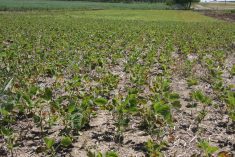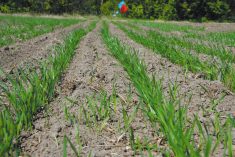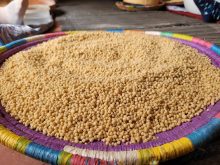Judging by the dry conditions in the southern Canadian Prairies this summer, durum production will likely fall this year despite a half percent increase in seeded area.
The amount of durum stocks carried into the 2023-24 crop year will likely be small, resulting in a tight overall supply of the crop in Canada.
Italy is often the largest importer of Canadian durum and forecasts show it had its best crop in years. That might curtail Italy’s need to import , although the forecast is not likely enough to meet all of Italy’s domestic needs.
Read Also

Exports off to a slow start after last year’s torrid pace
Canadian grain, oilseed and pulse exports are off to a slow start, but there are some bright spots, according to the Canadian Grain Commission’s most recent weekly export data report.
North African countries are also traditionally strong importers of Canadian durum and they had another year of below normal rainfall on crops, so their demand could be solid.
On the Prairies, the rainfall deficit is most acute in southern Alberta, where almost all areas have less than 60 percent of normal moisture since April 1 and large areas have less than 40 percent of average rain.
The dryness extends into southwestern Saskatchewan, where the lion’s share of Canada’s durum is produced. Much of the southwest has had less than 85 percent of normal moisture since April 1 but very little in June, meaning a lot of the crop is struggling.
The Saskatchewan crop report said that as of June 26, 31 percent of durum was very poor to poor, 27 percent was fair and 44 percent was good to excellent.
Longer range weather models show it might be mid-July before the chances for rain in the durum region improve.
In mid-June the monthly Agriculture Canada crop supply and demand update, using the long-term trend yield of 35.9 bushels per acre as a guide, forecast a 2023 durum crop of 5.82 million tonnes, up from last year’s 5.44 million tonnes and the drought-reduced 3.03 million two years ago.
That 5.82 million tonnes now seems much too high, considering the dry weather.
The same report forecast old-crop 2022-23 durum exports would total 4.8 million tonnes and a carry-out at a tight 480,000 tonnes.
But exports should exceed that forecast. As of week 46 of the crop year, ending June 16, durum exports already stood at 4.75 million tonnes, according to the Canadian Grain Commission.
That could mean the carry-out will wind up even smaller than expected. The feed, waste and dockage estimate, a number that usually provides some wiggle room in the balance sheet, could also be trimmed. Also, it might require an upward adjustment to last year’s production number.
Looking south across the border, American producers before seeding were expecting a big increase in durum acres, up by 22 percent to 1.78 million.
North Dakota growers were forecasted to raise acres 24 percent to 980,000 and Montana growers 2.8 percent to 730,000 acres.
The actual area seeded would be in the U.S. Department of Agriculture’s June 30 planting report, released after this column was written.
As of June 25, the condition of the North Dakota durum crop was rated as slightly better than usual and the Montana crop was a little worse than average.
On the demand side, Italy is often one of the top three buyers of Canadian durum and its import demand is affected by how much it produces domestically and how much the wider European Union produces.
Analyst Cocereal in June forecast the core 14 members of the EU would produce 7.09 million tonnes of durum, of which Italy would account for 4.03 million tonnes.
The EU total is up six percent over last year and production in Italy is up 11 percent from last year, which was one of the smallest crops in recent memory.
If the final tally of Italy’s durum harvest matches the forecast, it would be the largest durum crop in the country in years, which might mean reduced demand for imported grain.
Italy’s demand for Canadian durum is also complicated by its mandatory country-of-origin labelling (MCOOL) law that has been in place since 2017. Also, Italy’s main farm organization, Coldiretti, has an active domestic-use campaign that includes criticism of Canadian durum.
As recently as June, Coldiretti held protests in Italian cities, complaining Canadian imports depress the price of domestic durum and alleging that Canadian durum is sprayed pre-harvest with glyphosate as a desiccant.
The other durum importers regularly in the top three are Algeria and Morocco.
Both had trouble with the lack of rain in the growing season. Morocco’s crops were not as bad as in last year’s drought but still below normal. Algeria’s crop was worse than last year.
Neighbouring Tunisia can also in some years be a significant durum importer and it too had bad production this year.
So overall, there should be solid demand for durum from North African countries.

















